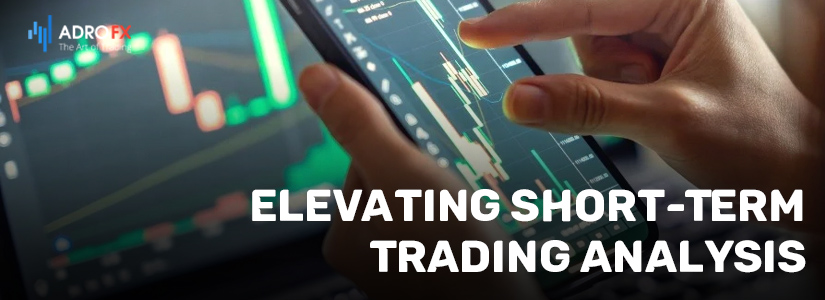Elevating Short-Term Trading Analysis

Short-term trading, often characterized by swift decision-making and rapid execution, is a dynamic and challenging endeavor within the world of financial markets. Traders engaged in this fast-paced domain aim to capitalize on fleeting market movements, seeking opportunities for profit within relatively compressed time frames.
In this article, we embark on a journey to explore the art and science of enhancing short-term trading analysis. Whether you are a seasoned trader looking to refine your skills or a newcomer seeking to grasp the fundamentals, we delve into strategies, tools, and techniques designed to sharpen your ability to decipher market dynamics in the short term.
The realm of short-term trading is marked by its unique set of challenges and opportunities. Volatility can be both a boon and a bane, and success often hinges on your ability to swiftly gather and interpret data, identify trends, and execute precise trades. Join us as we unravel the key elements of effective short-term trading analysis, equipping you with the knowledge and insights needed to navigate the intricate landscape of short-term trading and make informed decisions in the blink of an eye.
Analyze Different Chart Time Frames
When examining a specific market, it is essential to consider various chart time frames. Focusing solely on a narrow time frame can cause you to miss potential opportunities. By zooming out to longer time frames, you gain a broader perspective that can reveal opportunities that might not be apparent on shorter time scales. Conversely, if you only focus on longer time frames, you risk overlooking important details and shorter-term opportunities. Evaluating an asset across different time frames is a valuable practice because it enhances your understanding of market trends and aids in making well-informed decisions.
For example, when assessing a stock chart, it's beneficial to analyze it across multiple time frames such as 30 minutes, 2 hours, and 4 hours. For short-term analysis, you might employ indicators like the Simple Moving Average (SMA) and Relative Strength Index (RSI) to gauge the stock's trend. These different time frames can help you identify suitable entry points, allowing you to ride the trend until a bearish reversal signal appears.
Study Chart Patterns
Conducting effective technical analysis requires a thorough examination of chart patterns. Keep a vigilant eye out for significant market phases, including upward and downward movements, as well as sideways trends. These patterns are crucial when trading in the market.
All traders should be well-versed in both reversal and continuation patterns commonly found in candlestick charts. While it's advisable to confirm pattern signals using additional indicators or analysis techniques, these patterns can provide valuable insights into long-term market expectations.
Selecting the Optimal Indicators
To refine your trading strategy, consider customizing indicators to suit your specific time frame and market conditions. The question often arises: "Which settings should I use?" Smaller settings make an indicator more sensitive, whereas larger settings make it less sensitive, leading to more accurate but not infallible signals. For instance, when using the RSI indicator, standard values like 70/30 or 80/20 can be applied. However, indicators with larger settings may lag behind market movements.
Ultimately, the key lies in adjusting indicators to align with your unique trading style.
Informed Decision-Making
Short-term traders dealing with quick contract turnovers must make swift decisions. Overanalyzing can be detrimental in situations where quick judgments are required. Failing to seize every available opportunity can lead to missed profits. Effective short-term trading demands proactive planning and the avoidance of hasty decisions.
Short-term trading demands a distinct approach compared to long-term investing. To enhance your short-term market analysis, pay attention to candlestick patterns and tailor your indicators accordingly. Swift decision-making is crucial in short-term trading, and traders aiming to specialize in it must master this skill.
Conclusion
Short-term trading is a high-stakes endeavor, requiring quick thinking and precise execution. In this article, we've delved into strategies to enhance short-term trading analysis, whether you're a seasoned trader or new to the game.
Short-term trading offers both challenges and rewards, driven by market volatility. Success hinges on your ability to swiftly interpret data, spot trends, and act decisively. Armed with this knowledge, you can navigate the complex world of short-term trading and make informed decisions in an instant.
To excel, remember to analyze various chart time frames, study chart patterns, and customize indicators to fit your style. Quick decision-making is crucial in short-term trading, where opportunities are fleeting.
In the fast-paced realm of short-term trading, this article equips you with the tools to succeed. Dedicate yourself, practice diligently, and embark on a rewarding journey in the world of finance.

About AdroFx
Established in 2018, AdroFx is known for its high technology and its ability to deliver high-quality brokerage services in more than 200 countries around the world. AdroFx makes every effort to keep its customers satisfied and to meet all the trading needs of any trader. With the five types of trading accounts, we have all it takes to fit any traders` needs and styles. The company provides access to 115+ trading instruments, including currencies, metals, stocks, and cryptocurrencies, which make it possible to make the most out of trading on the financial markets. Considering all the above, AdroFx is the perfect variant for anyone who doesn't settle for less than the best.










